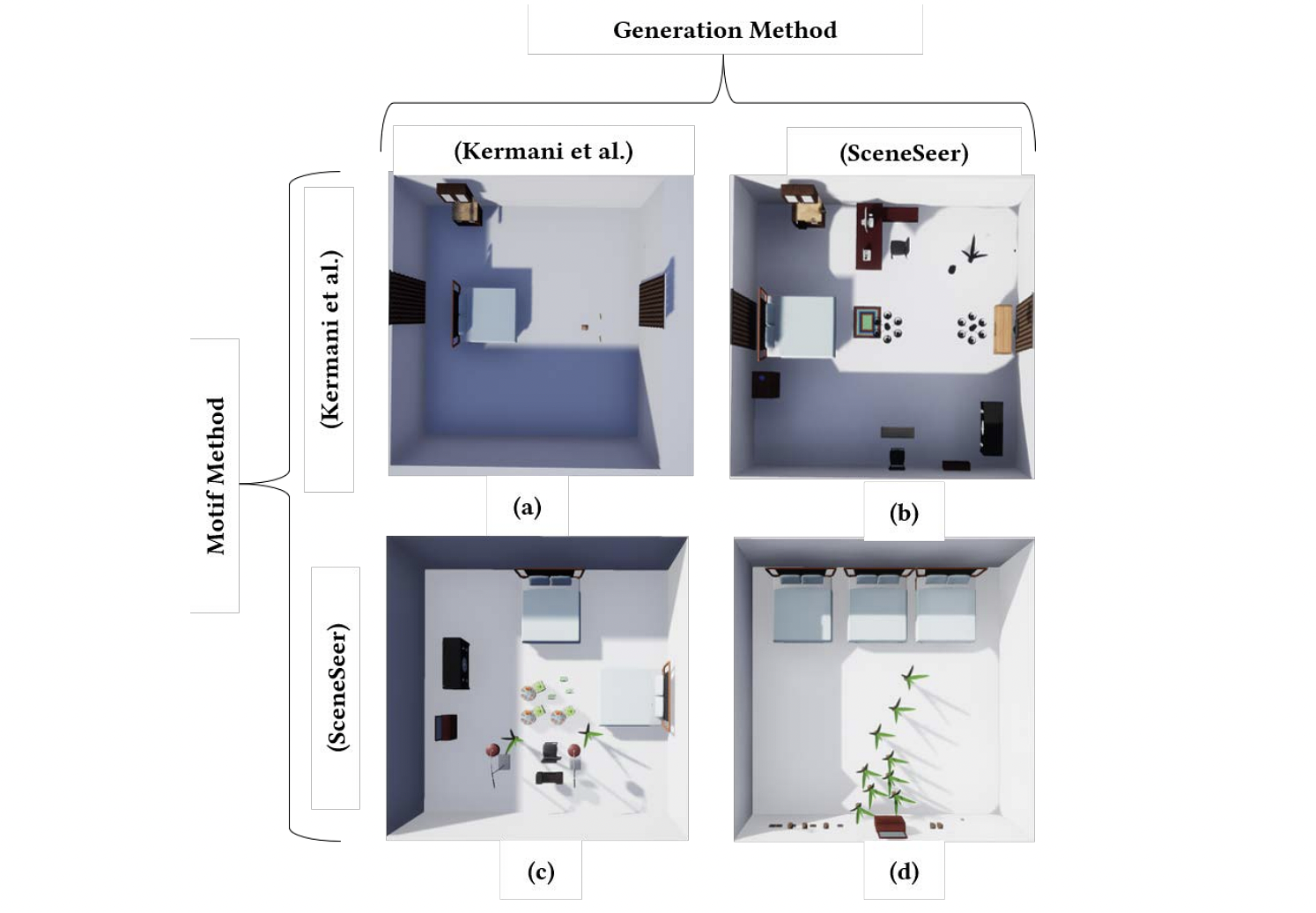In Proceedings of FDG
A generalized semantic representation for procedural generation of rooms

Procedural generation of rooms aims to create virtual environments that mimic common patterns found in real-world indoor locations, like offices or bedrooms. Graph-based models (e.g. factor graphs or Bayesian networks) have often been used to represent typical location's objects and their occurrence likelihood (nodes), as well as their inter-relationships (edges). Previous methods have struggled to represent object semantics in their graph nodes; specifically, they fail to fully and effectively support notions as abstractions (e.g. generic seat instead of chair) and replication (e.g. cups instead of cup). We propose a generalized representation and use for object semantics that overcomes the above limitations of graph-based models in the procedural generation of rooms. This node representation handles semantics as attributes, and clearly distinguishes the contribution of the attributes on the node from the potential effects of the node on the whole graph. We illustrate the additional expressive power of the resulting graph-based model for room generation, and show that it subsumes previous models as particular cases.
More Information
Citation
BibTex
@inproceedings{bib:balint:2019,
author = { Balint, J. Timothy and Bidarra, Rafael },
title = { A generalized semantic representation for procedural generation of rooms },
booktitle = { In Proceedings of FDG },
year = { 2019 },
pages = { 85:1--85:8 },
doi = { 10.1145/3337722.3341848 },
dblp = { conf/fdg/BalintB19 },
url = { https://publications.graphics.tudelft.nl/papers/99 },
}